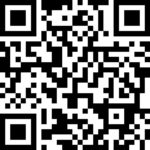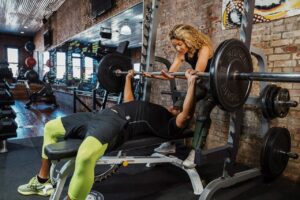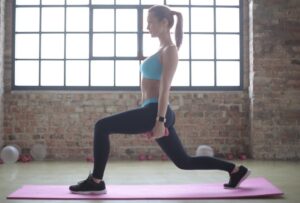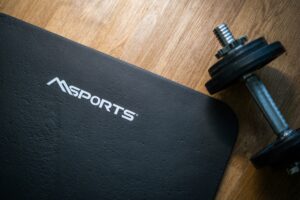Pulling exercises are one of several types of movements you can do. As their name implies, such activities involve bringing an external weight to your body or pulling yourself toward an object.
A common distinction between pulling and other types of movements is that the former typically emphasizes the posterior chain musculature: calves, hamstrings, glutes, and back.
Of course, there are exceptions. For example, the biceps are a muscle involved in pulling, but it is situated on the front side of your body (1). Similarly, the good morning isn’t your typical ‘pulling’ movement, but it develops the glutes, hamstrings, and lower back.
Performing pulling exercises is beneficial for strengthening a range of major muscles in your upper and lower body. For instance, lower-body pull activities emphasize the glutes and hamstrings––the primary hip extensors in the body.
Let’s review the lower body pull exercises list, how to perform each activity and their unique benefits.
The 6 Primary Lower Body Pull Exercises
1. Deadlift (Barbell)
Barbell deadlifts are one of the most beneficial exercises you can do to strengthen your entire body. The movement primarily works the glutes, hamstrings, and back but also develops the quadriceps, midsection, shoulders, and arms (2).
Some would argue that the deadlift is a ‘pushing’ exercise because trainees use the mental cue of ‘pushing the ground away’ at the start of each repetition. While it sounds logical to label the deadlift as a push movement because of the cue, we disagree.
The objective is to pull a loaded barbell from the floor, the movement develops your posterior chain, and deadlifts complement other pulling exercises.
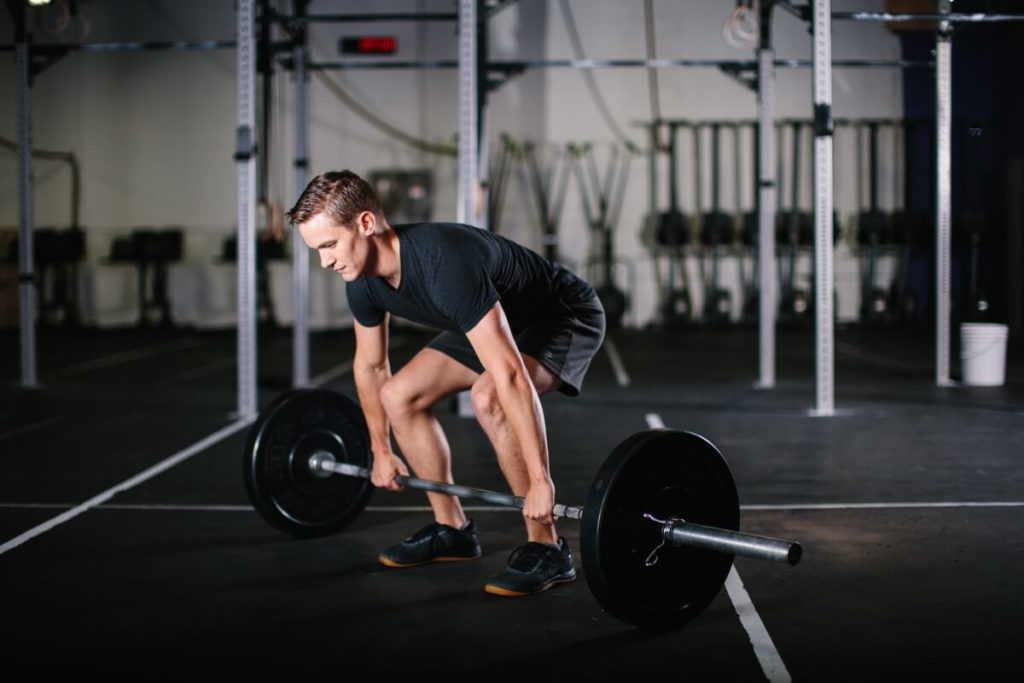
How to:
- Stand in front of a loaded barbell with your feet underneath the bar and a few inches apart. Your shins should be an inch or two from the bar.
- Bend forward and grab the bar with an overhand grip without moving it. Your hands should be just outside your lower legs.
- Bring your shoulders back to straighten your spine and lower your hips to position your shins against the bar.
- Inhale, engage your abs, and initiate the pull by pressing through your heels and engaging your upper body.
- Pull the bar in a straight line, dragging it across your body.
- As the bar moves over your knees, extend them and complete the rep by driving your hips forward.
- Slowly lower the barbell in the same straight line by breaking at the hips and bending your knees as the weight moves down.
Hevy Workout Tracker
Create your own lower body pull workouts with Hevy, and track your progress. Join +2M athletes.

For Personal Trainers
Personal trainer software to build workout programs for your clients, and track their progress.
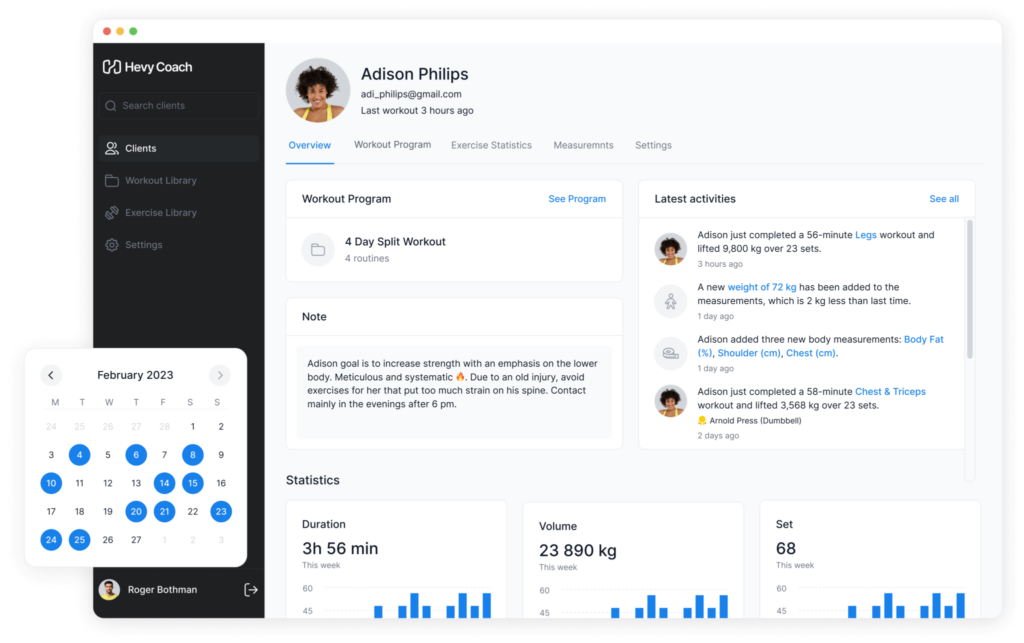


2. Sumo Deadlift
Sumo deadlifts are identical to the classic version, apart from one significant difference:
Instead of having your feet a few inches apart, you assume a wide (sumo) stance, and your arms are between your legs at the start.
Using a broader stance shifts the emphasis to the adductors (inner thigh muscles) and quadriceps, but it is still an excellent lower pull exercise (2).
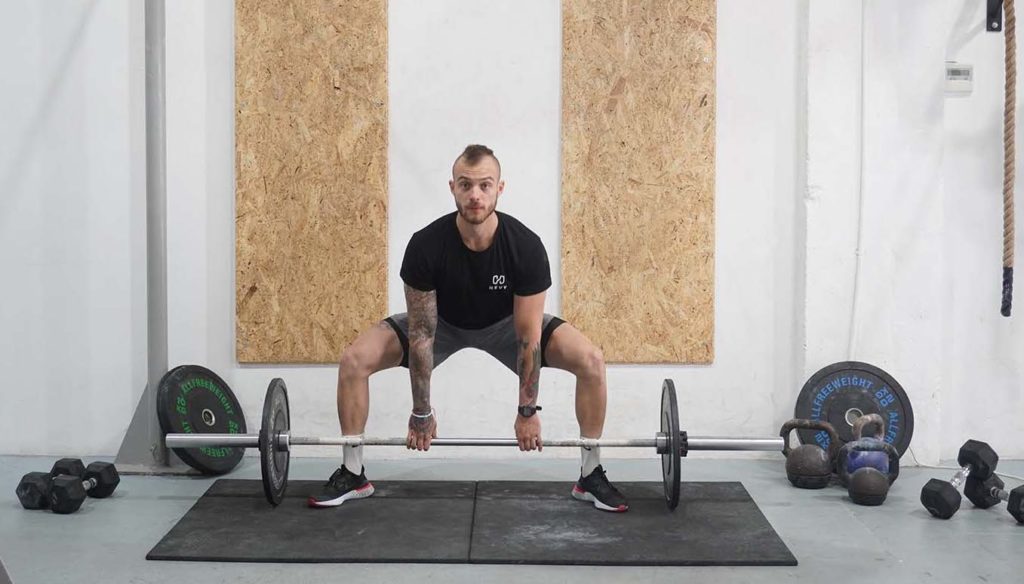

How to:
- Stand in front of a loaded barbell.
- Widen your stance and have your toes pointing forward and out. Your shins should be an inch or two from the bar.
- Bend forward and grab the barbell with an overhand grip, positioning your hands a few inches apart.
- Bring your chest out to straighten your back and lower your hips to get your shins against the bar.
- Inhale, squeeze your abs, and pull by pressing your heels into the floor.
- Drag the barbell against your body in a straight line, squeezing your glutes at the top.
- Slowly lower the bar in the same straight line and exhale.
3. Rack Pull
Rack pulls are a modified deadlift where you eliminate the first half of the exercise by elevating the barbell on blocks or inside a squat rack.
Doing so is beneficial for reducing the involvement of your legs and focusing on the glutes and back.
How to:
- Elevate a barbell on blocks or racks. It should be slightly below your knees.
- Stand in front of the bar with your upper shins an inch away.
- Lean forward and grab the bar with a double overhand grip (palms facing your body).
- Bring your chest out and lower your hips slightly to keep your spine neutral.
- Inhale, brace your midsection, and initiate the pull.
- Lift the bar in a straight line and squeeze your glutes to extend your hips to the top position.
- Slowly lower the barbell to the starting position as you exhale.
4. Good Morning
Good mornings are another excellent pulling exercise that doesn’t get the attention it deserves.
The movement is similar to a Romanian deadlift because it has an identical range of motion and emphasizes the glutes, hamstrings, and back (3).
A major difference is that you must place the bar on your back, similar to a barbell squat, instead of holding it in front of your body.
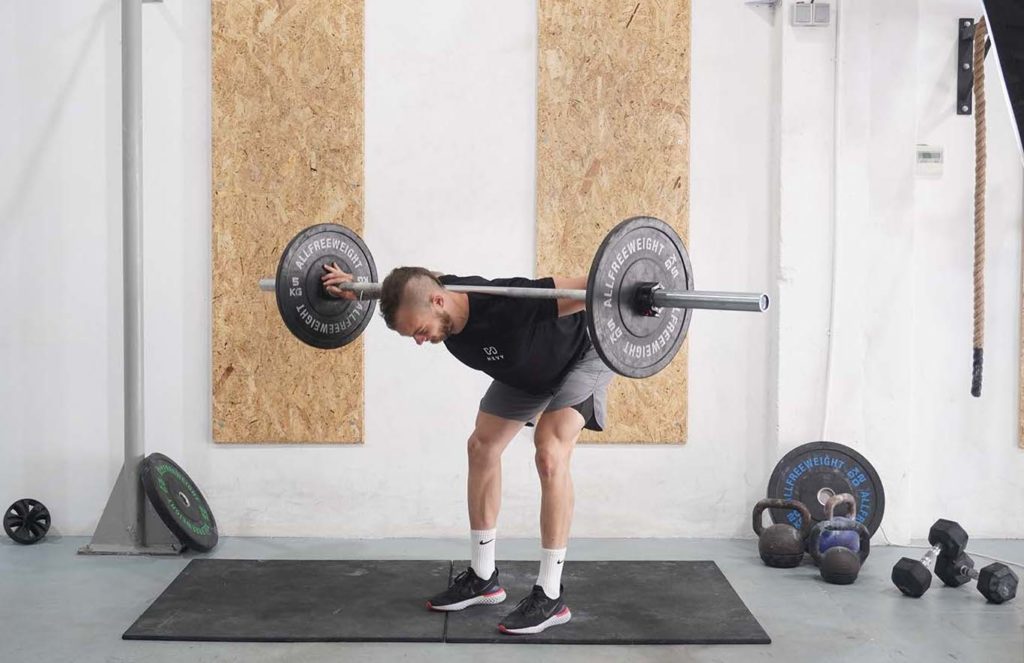

How to:
- Set the barbell at collarbone height.
- Raise your arms and place your hands evenly on the bar.
- Tuck your body underneath and position your mid traps (upper back) against the bar, similar to a back squat.
- Set yourself underneath the bar, brace your body, and extend your knees to unrack the bar.
- Take a couple of steps back to clear enough room and have your feet slightly more than shoulder-width apart.
- Bring your chest out, engage your abs, and inhale.
- Initiate the rep by driving your buttocks back while keeping your spine neutral.
- Hinge at the hips (bring your buttocks back) and lean your torso forward until you feel a significant stretch in your hamstrings. Your spine should remain neutral, and you should mostly feel tension in the glutes and hamstrings.
- Extend your body by pulling your hips forward and squeezing your glutes at the top. Exhale.
5. Straight Leg Deadlift
Straight leg deadlifts are another variation of the classic exercise that doesn’t get much attention these days.
The movement is identical to a conventional deadlift, apart from one difference:
Instead of bending your knees to get into the starting position, you keep your legs straight and lean your torso forward to a greater degree.
How to:
- Stand up in front of a loaded barbell with your shins against it.
- Bend your knees slightly and keep them in that position from start to finish.
- Lean your torso forward and grab the bar with a double overhand grip.
- Engage your abs and take a breath.
- Pull the barbell in a straight line, extending your hips at the top.
- Slowly lower the weight in the same straight line, exhaling near the bottom.
6. Romanian Deadlift (Barbell)
Romanian deadlifts are one of the best compound lower-body pull exercises to develop your hamstrings and glutes (4).
Like a stiff-leg deadlift, you must keep your legs straight. The difference is that you’re starting from an upright position, whereas stiff-leg deadlifts have you pick up the weight off the ground.
How to:
- Stand tall with a barbell in your hands. Use an overhand grip (palms facing back) and have your hands just outside your thighs.
- Position your feet in a comfortable stance with your toes pointing slightly out.
- Retract your shoulder blades, engage your abs, and inhale.
- Slowly hinge at the hips by bringing your buttocks back and lean your torso forward until you feel a good stretch at the back of your thighs.
- Extend your body and squeeze your glutes at the top. Exhale.
6 Accessory Lower Body Pull Exercises
1. Glute Ham Raise
Glute-ham raises are an accessory bodyweight exercise where you use your posterior chain muscles to raise and lower your torso (4).
One notable advantage of the exercise is that you don’t need external weight to load your musculature.
Depending on the glute-ham bench you’re using, you might also be able to bend and extend your knees alongside your hips, leading to superior hamstring activation.
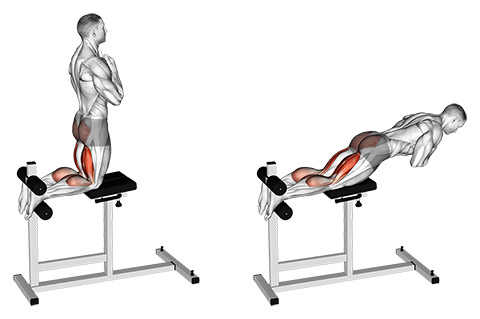

How to:
- Set yourself up on a glute-ham bench with your feet secure and hips against a padded platform.
- Bring your hands behind your head, engage your abs, and inhale.
- Slowly lean your torso forward while keeping your lower body secure.
- Descend until you feel a stretch in your posterior muscles, and pause for a moment.
- Raise your torso to the starting position by flexing your hamstrings and glutes. Exhale near the top.
2. Single Leg Romanian Deadlift (Dumbbell)
Single-leg Romanian deadlifts are an excellent accessory exercise. One notable benefit is that you train one side at a time, which can reduce the risk of side-to-side muscle imbalances.
Another advantage of single-leg training is that it strengthens the stabilizing muscles in your lower body, leading to better balance and superior overall athleticism.
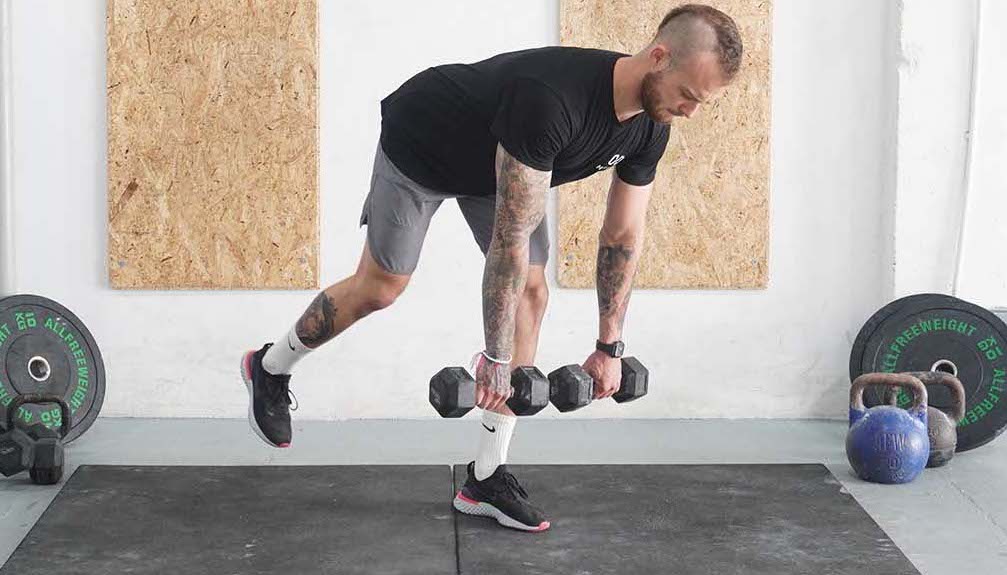

How to:
- Grab a pair of dumbbells and stand tall.
- Have your feet in a comfortable stance, retract your shoulder blades, and engage your abs.
- Lift your left foot off the floor and support yourself on your right side.
- Inhale and slowly lean your torso forward, keeping your back straight and allowing your left leg to travel behind your body.
- Descend until you feel a stretch in your right hamstring, and slowly raise your torso to the top position as you exhale.
- Once finished training your right side, plant your left foot on the floor, and do the same number of reps.
Related article: The Top Dumbbell Leg Workouts to Attain Powerful Legs
3. Nordic Hamstring Curls
Nordic curls are identical to the glute-ham raise as both movements have a similar range of motion and train the same muscles.
The primary difference between the two exercises is that a glute-ham raise requires a special machine, whereas nordic curls don’t. You can secure your feet underneath a barbell, couch, or another heavy object or have a friend hold your feet down while you do the exercise.
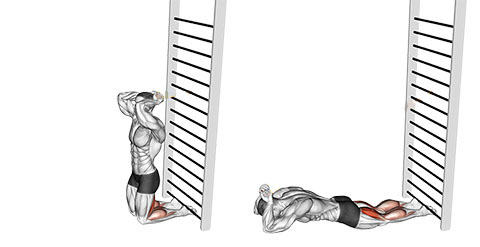

How to:
- Place an exercise mat on the floor and get down on your knees.
- Secure your feet underneath a heavy object (e.g., a loaded barbell) or have a friend hold them down.
- Have your torso upright with your shoulders back and arms to your sides.
- Engage your abs and inhale.
- Slowly lower your torso by extending your knees. Your knees, hips, and shoulders should remain in a straight line with your spine neutral and midsection tense. Have your hands facing the ground for safety if you fail to complete a repetition and fall forward.
- Descend as low as possible and flex your hamstrings to raise your torso upright. Exhale.
4. Glute Bridge
Glute bridges are identical to the hip thrust apart from one difference:
Instead of positioning your upper back against a flat gym bench, you must lie on the floor.
A notable benefit of the exercise is that you can do it at home, even if you don’t have any equipment. To make the glute bridge more challenging, support yourself on one foot at a time.
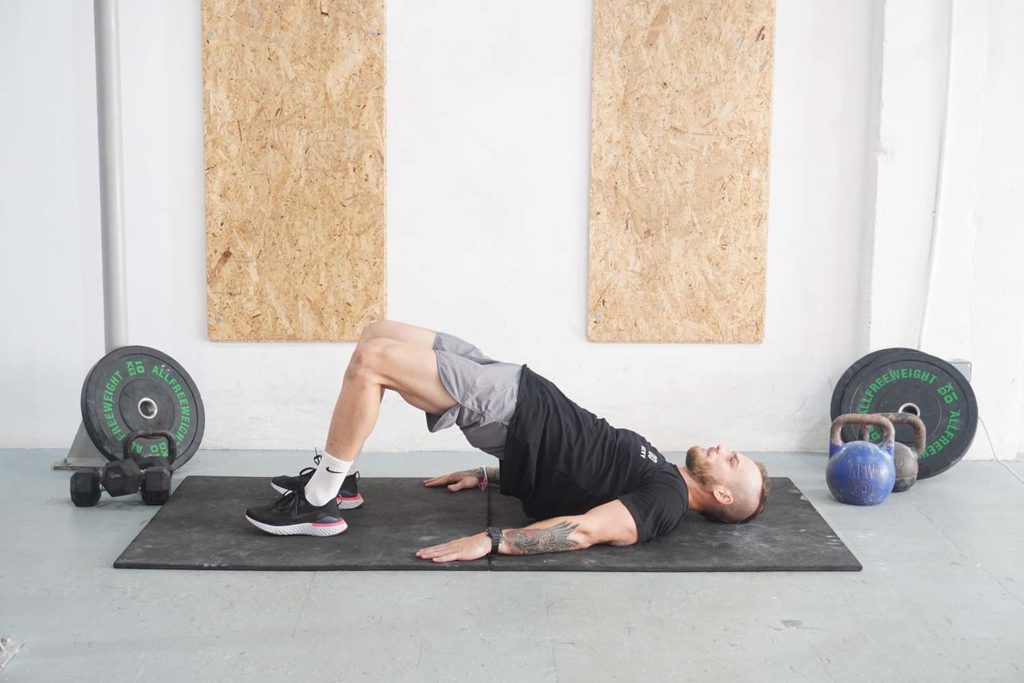

How to:
- Lie on the floor, bend your knees, and have your feet flat.
- Position your arms to your sides, engage your abs, and inhale.
- Initiate the repetition by pressing through your heels as you drive your hips toward the ceiling.
- Move up until your knees, hips, and shoulders are in a straight line, squeezing your glutes at the top.
- Slowly lower your buttocks to the floor and exhale.
5. Cable Pull Through
Cable pull throughs are a unique lower-body pull exercise that develops your entire posterior chain.
A notable benefit of the movement is that using a cable machine provides consistent tension, making each repetition more beneficial.
How to:
- Select the appropriate weight, set the pulley to the lowest position, and attach a rope.
- Face away from the pulley, have the rope between your feet, bend forward, and grab the rope with both hands.
- Take a couple of steps forward to unrack the weight from its stack.
- Engage your abs and inhale.
- Slowly lean your torso forward and bring your buttocks back to keep your back straight.
- Descend until you feel a stretch in your posterior musculature. For most people, that would mean having their torso almost parallel to the floor (horizontal).
- Hold the bottom for a moment and raise your torso by engaging your upper back and driving your hips forward.
- Squeeze your glutes at the top position as you exhale.
6. Reverse Hyperextension
Reverse hyperextensions are similar to the glute-ham raise and nordic curl, as all three movements develop your posterior chain.
A notable distinction of hyperextensions is that you keep your torso in the same position from start to finish and move your lower body at the hips to train the glutes, hamstrings, and lower back.
How to:
- Set yourself up on a reverse hyperextensions machine with your stomach against the platform and hips on the edge.
- Grab the handles for support and have your legs dangling from the platform’s edge.
- Brace your core, straighten your knees, and inhale.
- Flex your glutes, hamstrings, and lower back to raise your legs until they align with your upper body.
- Slowly lower your legs to the starting vertical position and exhale. Keep the motions controlled, and avoid jerking your legs to do more reps.
Hevy Workout Tracker
Create your own lower body pull workouts with Hevy, and track your progress. Join +2M athletes.



For Personal Trainers
Personal trainer software to build workout programs for your clients, and track their progress.



Sample Lower Body Workout With Some of The Above Exercises
Here is how the above exercises might look in action:
| Exercise | Sets | Reps | Rest Period |
| Deadlift (Barbell) | 3-4 | 5 to 8 | 3 to 5 minutes |
| Glute Ham Raise | 3 | 8 to 12 | 1.5 to 2.5 minutes |
| Single Leg Romanian Deadlift (Dumbbell) | 3 | 10 to 15 | 1.5 to 2 minutes |
| Glute Bridge | 2-3 | 15 to 25 | 1 to 2 minutes |
The combination of exercises is excellent for emphasizing the posterior chain musculature with various loads to produce adequate mechanical tension and metabolic stress (5).
Deadlifts are the primary exercise where the objective is to overload your body with more weight. As we move down the list, the intensity decreases in favor of more high-rep training.
Doing so improves muscle activation and allows you to accumulate the necessary training volume (number of sets) for hypertrophy (6).
It’s important to note that the workout primarily emphasizes the posterior chain. You should also include some quadricep-specific work in the form of squats, lunges, etc. For example, the above can be lower body workout A, and you can have a second workout in the week where you primarily focus on the quadriceps and calves.
Related article: The Upper / Lower Split – Complete Workout Program Guide
Frequently Asked Questions (FAQs)
1. What is the best pull workout?
There isn’t a single best pull workout.
You can do numerous combinations of exercises and repetition ranges to train your muscles from various angles and promote optimal growth.
2. Is hip thrust push or pull?
The hip thrust is more of a push exercise because you must press your body against the barbell and raise it toward the ceiling. Still, it primarily works the posterior chain, unlike most other pressing exercises (7).
3. Are squats push or pull?
Squats are a push exercise. Like the hip thrust, the objective is to press the barbell while extending the knees and hips.
4. How many reps should you do on lower body pull exercises?
You should experiment with various repetition ranges (5-8; 8-12; 12-15; 15-25+) to stress your muscles in more ways and produce adequate mechanical tension and metabolic stress that aid hypertrophy (5).
Final Thoughts
Prevailing wisdom suggests that we need dozens of exercises to develop various major muscles in the body. But, as you can see, that isn’t necessarily the case.
The above are 12 of the best lower body pull exercises; you don’t have to do all of them to grow well.
As few as three or four movements can be enough to cause incredible muscle growth and hypertrophy, so long as you combine them in a good workout.

